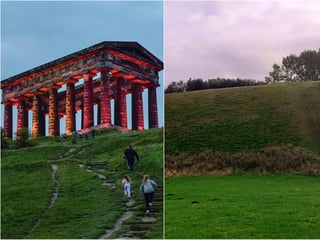From wartime heroics to Sunderland's first air shows - the amazing history of our historic airfield
and live on Freeview channel 276
World War One origins
In October 1916, the height of World War One, a flight station originally called Hylton was established for ‘B’ Flight of the No. 36 Flying Squadron, which had been formed in Cramlington seven months earlier.
The squadron was part of the Royal Flying Corps, which in 1918 merged with the Royal Naval Air Service to become the RAF we know today.
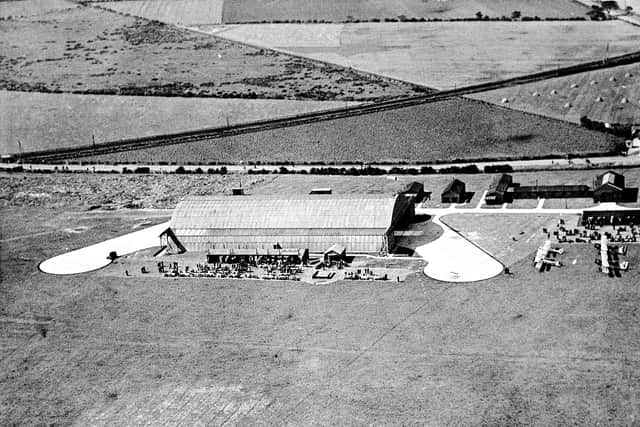

Advertisement
Hide AdAdvertisement
Hide AdThe flight station was established upon what in 1916 was called the West Town Moor, between Washington and Sunderland; 58 years before Washington became officially part of Sunderland.
A legendary shipbuilding town, Sunderland had been targeted by around 20 bombs dropped from German Zeppelins on April 1, The Echo reported 22 deaths. A plane crashed into the Co-op building in Southwick, now the post office, killing five. Incredibly the pilot survived.
The primitive planes of 36 Squadron defended the coastal skies between Newcastle and Whitby, notably against another Zeppelin attack on November 27 over West Hartlepool.
Between the wars: the first Sunderland Air Shows
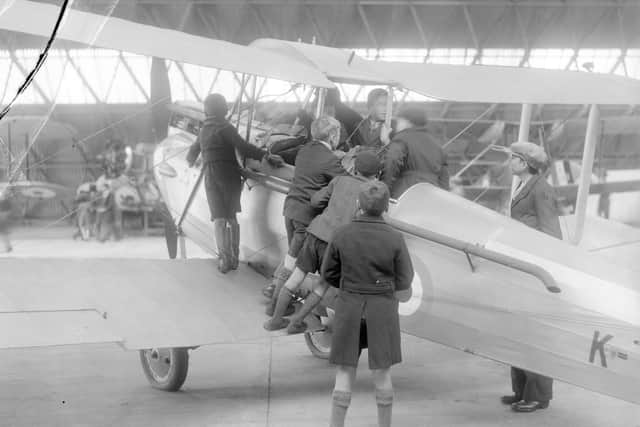

Spoiler alert. Britain was on the winning side in WWI, after which Usworth’s aerodromes were scarcely used for over a decade.
Advertisement
Hide AdAdvertisement
Hide AdThe airfield reopened in 1930 with a hangar built in the Lamella style: the traditional flat ‘D’ shape.
It became home to the No. 607 (County of Durham) Squadron, which still exists today having re-formed in 2015 operating from RAF Leeming. It was first a bomber unit, switching to fighter unit in 1936.
The Sunderland Airshow as most people know it began in 1988. But aerobatic displays in Sunderland started much earlier. At least twice, in 1932 and 1933, crowds were thrilled by visits from flying ace Alan Cobham and his team.
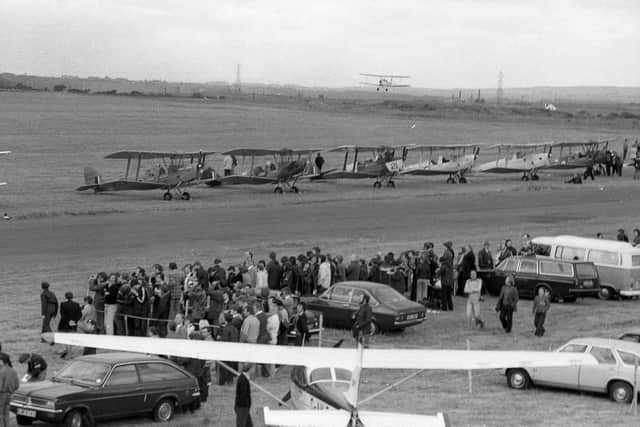

Alan Cobham’s Flying Circus as it was known, decades before the name was appropriated by a certain comedy troupe, was hugely popular.
Advertisement
Hide AdAdvertisement
Hide AdThe public were given the chance to see 607 Squadron close up on May 24, 1934 at the annual Empire Air Day. Thousands took the opportunity. It was possible for the public to sit in a grounded aircraft for a small fee. At the time it must have been like boarding a Space Shuttle.
Aircraft had advanced considerably by the time of Usworth’s final Empire Air Day in May 1939, when Britain again limbered up for war.
The Battle of Britain comes to Usworth
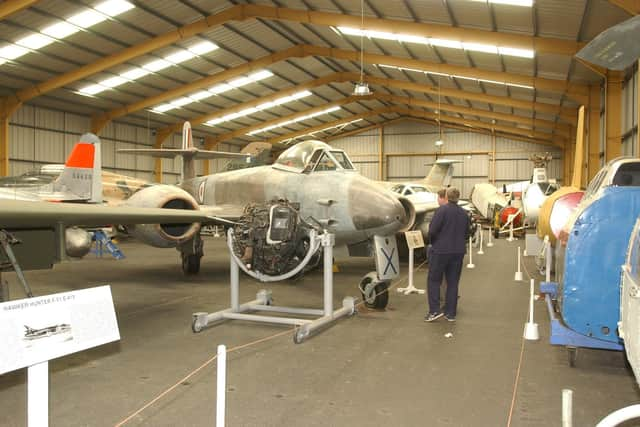

Having an airfield in the area would come at a price. The Battle of Britain was fought in 1940. On August 14 it came to Usworth.
Around 150 Luftwaffe aircraft, based in Norway and Denmark, attacked the North East coast. Already a target because of its continued shipbuilding prowess, Wearside’s airfield was an additional target.
Advertisement
Hide AdAdvertisement
Hide AdA dogfight ensued and the Germans were unsuccessful in their attempts to destroy Usworth. Flt Lt Francis Blackadder DSO led the way in defeating what was the largest daytime raid ever launched by the Luftwaffe on the North East.
In November 2018, a blue plaque was unveiled in honour of Blackadder at the Three Horseshoes pub on Washington Road for his heroics. The pub served as an RAF officers’ mess during the war.
However, the raid still claimed the lives of 29 people in Sunderland, Hawthorne and Easington. Many others were injured.
The role of the airfield changed to training soon afterwards and it was protected by barrage balloons. It was relatively quiet for the rest of the war. The RAF’s No. 31 Gliding School trained there between 1944 and 1955.
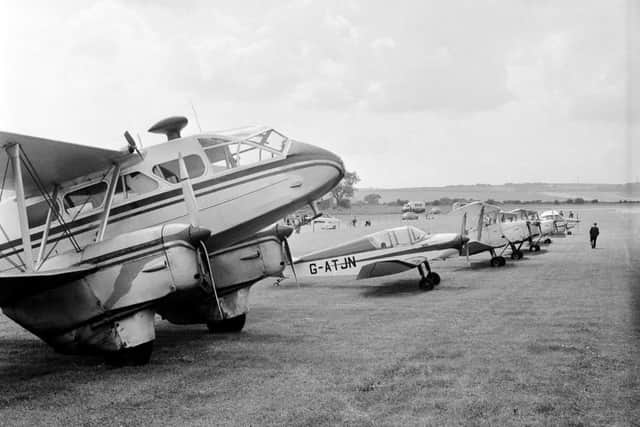

Sunderland Airport
Advertisement
Hide AdAdvertisement
Hide AdIn 1962 the airfield was bought for £27,000 by the Sunderland Corporation, which ran most of the local bus services and previously the trams. The base reopened as Sunderland Airport. Improvements were made and the following year the Sunderland Flying Club was formed.
After a successful opening day and ceremony in June 1964, the airport repeated the event the following year. By 1966 it was hosting a fully fledged air show. Sound familiar?
The inaugural air show attracted 17,000 spectators and the star attraction, as at many such events, was a display by the Red Arrows. The team had only been formed a few months beforehand and this was one of their earliest performances. Usworth’s air shows continued on-and-off until 1980.
For those with the stomach for that sort of thing, gliding and parachuting were among the activities on offer at Sunderland Airport. It was a successful business venture. But there was still the occasional drama at the site.
Advertisement
Hide AdAdvertisement
Hide AdIn August 1974 an RAF Buccaneer, with a top speed of almost 700 mph, made an emergency landing there. This was done completely without warning by its American pilot following a bird strike.
The plane’s canopy was shattered, the navigator injured and Usworth’s runway slightly too short. Luckily the incident ended without serious mishap – except for the bird.
Nissan comes, the airport goes
What is now called the North East Land, Sea and Air Museums (NELSAM) opened in Usworth in 1975: an excellent place to visit. Your writer is not an aviation buff, but if you’ve never been you don’t know what you’re missing. It’s still going strong (when circumstances allow).
However, a few years after opening, the museum was forced to move to another site on Old Washington Road. This was because of big business. Extremely big business.
Advertisement
Hide AdAdvertisement
Hide AdWhat had been RAF Usworth closed forever on Thursday, May 31, 1984. The airfield had been sold to Nissan. You know the rest.
Although a technically correct title, the name Sunderland Airport suggests a certain grandeur that the airfield never had. But there was so much more to the place than just a landing strip and a hangar.
* Our thanks to Phil Curtis of the Sunderland Antiquarian Society
